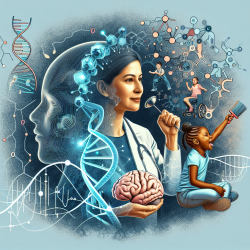Introduction
In the world of speech-language pathology, data-driven decisions are paramount to achieving the best outcomes for children. But what if we could borrow insights from other scientific fields to enhance our practice? The recent advancements in computational methods for protein localization prediction, as detailed in a comprehensive review by Jiang et al. (2021), offer intriguing possibilities.
Understanding Protein Localization Prediction
Protein localization prediction involves determining where proteins are situated within a cell, which is crucial for understanding their function. This process is not unlike identifying the root cause of a speech or language disorder in a child. Just as proteins need to be in the right place to function correctly, therapeutic interventions must be precisely targeted to be effective.
Key Findings from the Research
The review highlights several computational methods that have significantly improved the accuracy of protein localization predictions, particularly through the use of machine learning and deep learning techniques. These advancements are not only cost-effective but also offer high-throughput capabilities, making them invaluable for large-scale analyses.
Implications for Speech-Language Pathology
So, how can these findings be applied to speech-language pathology? Here are a few ideas:
- Data Integration: Just as computational models integrate various data sources to predict protein localization, speech-language pathologists can enhance their assessments by integrating data from multiple sources, such as standardized tests, observational data, and parent interviews.
- Machine Learning Applications: The use of machine learning in protein localization prediction suggests that similar techniques could be applied to predict therapy outcomes or identify the most effective interventions for specific disorders.
- Personalized Interventions: By understanding the specific 'localization' of a child's speech or language disorder, interventions can be more precisely tailored, much like targeting specific cellular compartments in protein studies.
Encouraging Further Research
While the parallels between protein localization prediction and speech-language pathology are not immediately obvious, they underscore the importance of interdisciplinary research. Practitioners are encouraged to explore these computational methods further and consider how they might inform their practice.
Conclusion
As we strive to create better outcomes for children, it's essential to remain open to insights from other scientific domains. The advancements in protein localization prediction offer valuable lessons in data integration, machine learning applications, and personalized interventions. By embracing these concepts, speech-language pathologists can enhance their practice and improve outcomes for the children they serve.
To read the original research paper, please follow this link: Computational methods for protein localization prediction.










